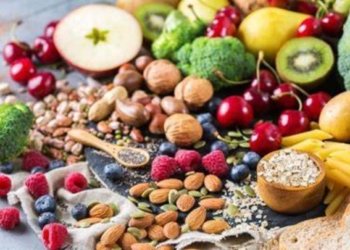If you are looking for ways to improve your body composition, you might have wondered if it is possible to turn your excess fat into lean muscle. This is a common question that many people have, especially those who are trying to lose weight and gain strength. But is it possible to transform fat into muscle? And if so, how can you do it effectively?
The answer to this question is not as simple as you might think. It is a myth that fat can turn into muscle. Fat and muscle are two different types of tissues that have different functions and structures. They cannot be converted into each other. However, this does not mean that you cannot change your body composition and achieve your fitness goals. You can still lose fat and gain muscle, but you have to do it differently.
How Fat and Muscle Work in Your Body
To understand why fat cannot turn into muscle, you need to know how these two tissues work in your body. Here are some key points to remember:
Fat is stored energy
Fat, also known as adipose tissue, is a type of connective tissue that stores excess energy in the form of triglycerides. Fat cells, also known as adipocytes, can expand or shrink depending on how much energy you consume and expend. Fat is essential for your health, as it provides insulation, cushioning, and hormone production. However, too much fat can lead to health problems, such as obesity, diabetes, and cardiovascular diseases.
Muscle is active tissue
Muscle, also known as skeletal muscle, is a type of tissue that contracts and relaxes to move. Muscle cells, also known as myocytes, contain protein filaments called actin and myosin, which slide past each other to generate force. Muscle is also essential for your health, as it supports your posture, metabolism, and immune system. However, muscle can also be lost due to aging, inactivity, or illness.
Fat and muscle have different metabolic rates
Fat and muscle have different effects on your metabolism, which is the rate at which your body burns calories. Muscle is more metabolically active than fat, meaning that it requires more energy to maintain itself. This means that the more muscle you have, the higher your resting metabolic rate (RMR) will be, and the more calories you will burn even when you are not exercising.

How to Lose Fat and Gain Muscle?
Now that you know that fat and muscle are different types of tissues that cannot be converted into each other, you might be wondering how you can lose fat and gain muscle at the same time. The answer is that you have to create a caloric deficit and a muscle stimulus. Here is what you need to do:
- Create a caloric deficit by consuming fewer calories than you burn. This will force your body to use your stored fat as a source of energy, resulting in fat loss. However, you have to be careful not to create too large of a deficit, as this can also cause muscle loss and metabolic slowdown.
- Create a muscle stimulus by performing resistance training exercises that challenge your muscles. This will induce micro-tears in your muscle fibers, which will then repair and grow stronger and bigger, resulting in muscle gain. However, you have to be careful not to overtrain, as this can also cause muscle loss and injury.
By following these two steps, you can achieve a body recomposition, which is the process of losing fat and gaining muscle simultaneously. However, you have to be patient and consistent, as this process can take time and effort. You also have to monitor your progress and adjust your diet and exercise accordingly, as your body will adapt to the changes and require different stimuli.
Benefits of Losing Fat and Gaining Muscle
Losing fat and gaining muscle can have many benefits for your health and well-being. Here are some of the advantages of achieving a body recomposition:
- Improved appearance: Losing fat and gaining muscle can enhance your physical appearance, as you will look leaner, fitter, and more toned. This can boost your self-confidence and self-esteem, as well as your attractiveness to others.
- Improved performance: Losing fat and gaining muscle can improve your physical performance, as you will have more strength, endurance, and power. This can help you excel in sports, hobbies, and daily activities, as well as prevent injuries and falls.
- Improved health: Losing fat and gaining muscle can improve your health, as you will have lower risks of obesity, diabetes, cardiovascular diseases, and some cancers. You will also have better blood pressure, blood sugar, cholesterol, and inflammation levels.
Challenges of Losing Fat and Gaining Muscle
Losing fat and gaining muscle can also have some challenges that you need to be aware of and overcome. Here are some of the difficulties of achieving a body recomposition:
- Slow progress: Losing fat and gaining muscle can be a slow and gradual process, especially if you are not a beginner or have a lot of fat to lose. You might not see noticeable changes in your weight, body fat percentage, or muscle mass for weeks or months. This can be frustrating and demotivating, especially if you compare yourself to others or unrealistic standards.
- Plateaus: Losing fat and gaining muscle can also be a non-linear process, meaning that you might experience periods of stagnation or regression in your results. This can happen due to various factors, such as hormonal fluctuations, water retention, stress, or adaptation. This can be confusing and discouraging, especially if you are not sure what to do next.
- Trade-offs: Losing fat and gaining muscle can also involve some trade-offs that you need to balance and prioritize. For example, you might have to sacrifice some of your social life, leisure time, or food preferences to stick to your diet and exercise plan. You might also have to deal with some side effects, such as hunger, fatigue, or soreness. You have to weigh the pros and cons of your choices and decide what is worth it for you.
Conclusion
Losing fat and gaining muscle is a common and desirable goal for many people who want to improve their body composition, health, and well-being. However, it is not as simple as turning fat into muscle, as these are two different types of tissues that cannot be converted into each other. Instead, you have to create a caloric deficit and a muscle stimulus, which will result in a body recomposition. This process can have many benefits, but also some challenges, that you need to be aware of and overcome.



































